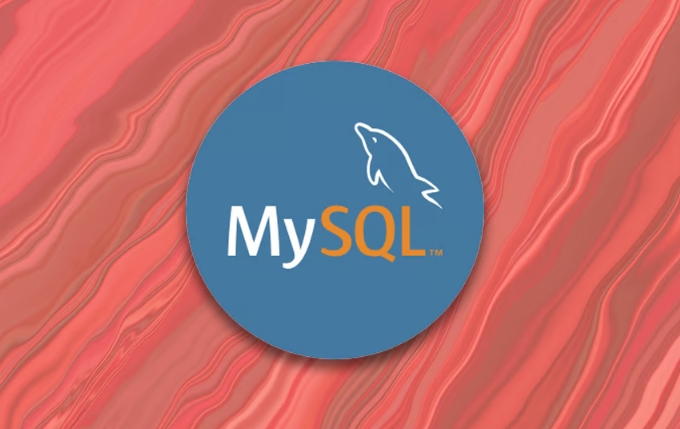MySQL supports JSON data types since 5.7, which can be used to store and operate JSON data; 1. When storing, you need to use JSON type fields and ensure the format is correct; 2. Query the JSON_EXTRACT or -> operator to extract field values; 3. Modify functions such as JSON_SET to update content; 4. In terms of performance, you cannot directly index internal fields, and can be implemented by generating columns; 5. JSON is more suitable for scenarios with more reads, fewer writes and less complex structures.

MySQL supports JSON data types starting from version 5.7, which makes it much easier to store and manipulate JSON format data in the database. Although it is not as flexible as a dedicated document-based database, it does provide a good compromise in the scenario of mixing structured and semi-structured data.

How to store JSON data
MySQL provides JSON type fields that can be used to directly store strings in JSON format. For example, if you have a user table and want to record unstructured content such as user interests, hobbies, device information, etc., you can define a JSON type column:

CREATE TABLE users (
id INT PRIMARY KEY,
name VARCHAR(100),
metadata JSON
);When inserting data, you can directly pass in standard format JSON strings:
INSERT INTO users (id, name, metadata)
VALUES (1, 'Alice', '{"hobbies": ["reading", "coding"], "devices": {"phone": "iPhone", "laptop": "MacBook"}}');It should be noted that MySQL will verify whether the JSON you entered is legal. If the format is wrong, an error will be reported. Therefore, it is best to make sure that the JSON is correct before writing.

How to query and manipulate JSON data
MySQL provides a series of functions to access and manipulate JSON data, the most commonly used is JSON_EXTRACT() . For example, want to find out all users who use iPhone:
SELECT name FROM users WHERE JSON_EXTRACT(metadata, '$.devices.phone') = '"iPhone"';
Here is a small detail: the extracted value is JSON type by default (with quotes), so when comparing, you need to add double quotes or use the ->> operator to automatically convert it into a string:
SELECT name FROM users WHERE metadata->>'$.devices.phone' = 'iPhone';
In addition to extracting, you can also modify JSON content. For example, add a new project to a user's interests:
UPDATE users SET metadata = JSON_SET(metadata, '$.hobbies[2]', 'traveling') WHERE id = 1;
Performance considerations
Although the JSON type is convenient, it also has some performance limitations. First, you cannot directly index specific fields in the JSON field unless you use a generated column and persist it. For example, you want to index devices.phone :
ALTER TABLE users ADD COLUMN phone VARCHAR(50) GENERATED ALWAYS AS (JSON_UNQUOTE(JSON_EXTRACT(metadata, '$.devices.phone'))) STORED; CREATE INDEX idx_phone ON users(phone);
This allows you to use indexes like normal fields. However, this method increases maintenance costs and requires weighing whether you really need to query this field frequently.
In addition, the JSON type is more suitable for scenarios where more reads and less writes or changes in data infrequently. If you often need to deeply parse and update nested structures, you may want to consider whether some fields should be "deconstructed" and stored as columns separately.
Basically that's it. The key to using MySQL's JSON type is to know when to use it and when not to over-depend. The structure should not be too complicated, and do not nest too deeply, otherwise it will be easy to write dizzy when querying.
The above is the detailed content of Working with JSON data types in MySQL. For more information, please follow other related articles on the PHP Chinese website!

Hot AI Tools

Undress AI Tool
Undress images for free

Undresser.AI Undress
AI-powered app for creating realistic nude photos

AI Clothes Remover
Online AI tool for removing clothes from photos.

Clothoff.io
AI clothes remover

Video Face Swap
Swap faces in any video effortlessly with our completely free AI face swap tool!

Hot Article

Hot Tools

Notepad++7.3.1
Easy-to-use and free code editor

SublimeText3 Chinese version
Chinese version, very easy to use

Zend Studio 13.0.1
Powerful PHP integrated development environment

Dreamweaver CS6
Visual web development tools

SublimeText3 Mac version
God-level code editing software (SublimeText3)

Hot Topics
 What is GTID (Global Transaction Identifier) and what are its advantages?
Jun 19, 2025 am 01:03 AM
What is GTID (Global Transaction Identifier) and what are its advantages?
Jun 19, 2025 am 01:03 AM
GTID (Global Transaction Identifier) ??solves the complexity of replication and failover in MySQL databases by assigning a unique identity to each transaction. 1. It simplifies replication management, automatically handles log files and locations, allowing slave servers to request transactions based on the last executed GTID. 2. Ensure consistency across servers, ensure that each transaction is applied only once on each server, and avoid data inconsistency. 3. Improve troubleshooting efficiency. GTID includes server UUID and serial number, which is convenient for tracking transaction flow and accurately locate problems. These three core advantages make MySQL replication more robust and easy to manage, significantly improving system reliability and data integrity.
 What is a typical process for MySQL master failover?
Jun 19, 2025 am 01:06 AM
What is a typical process for MySQL master failover?
Jun 19, 2025 am 01:06 AM
MySQL main library failover mainly includes four steps. 1. Fault detection: Regularly check the main library process, connection status and simple query to determine whether it is downtime, set up a retry mechanism to avoid misjudgment, and can use tools such as MHA, Orchestrator or Keepalived to assist in detection; 2. Select the new main library: select the most suitable slave library to replace it according to the data synchronization progress (Seconds_Behind_Master), binlog data integrity, network delay and load conditions, and perform data compensation or manual intervention if necessary; 3. Switch topology: Point other slave libraries to the new master library, execute RESETMASTER or enable GTID, update the VIP, DNS or proxy configuration to
 How to connect to a MySQL database using the command line?
Jun 19, 2025 am 01:05 AM
How to connect to a MySQL database using the command line?
Jun 19, 2025 am 01:05 AM
The steps to connect to the MySQL database are as follows: 1. Use the basic command format mysql-u username-p-h host address to connect, enter the username and password to log in; 2. If you need to directly enter the specified database, you can add the database name after the command, such as mysql-uroot-pmyproject; 3. If the port is not the default 3306, you need to add the -P parameter to specify the port number, such as mysql-uroot-p-h192.168.1.100-P3307; In addition, if you encounter a password error, you can re-enter it. If the connection fails, check the network, firewall or permission settings. If the client is missing, you can install mysql-client on Linux through the package manager. Master these commands
 Why is InnoDB the recommended storage engine now?
Jun 17, 2025 am 09:18 AM
Why is InnoDB the recommended storage engine now?
Jun 17, 2025 am 09:18 AM
InnoDB is MySQL's default storage engine because it outperforms other engines such as MyISAM in terms of reliability, concurrency performance and crash recovery. 1. It supports transaction processing, follows ACID principles, ensures data integrity, and is suitable for key data scenarios such as financial records or user accounts; 2. It adopts row-level locks instead of table-level locks to improve performance and throughput in high concurrent write environments; 3. It has a crash recovery mechanism and automatic repair function, and supports foreign key constraints to ensure data consistency and reference integrity, and prevent isolated records and data inconsistencies.
 Why do indexes improve MySQL query speed?
Jun 19, 2025 am 01:05 AM
Why do indexes improve MySQL query speed?
Jun 19, 2025 am 01:05 AM
IndexesinMySQLimprovequeryspeedbyenablingfasterdataretrieval.1.Theyreducedatascanned,allowingMySQLtoquicklylocaterelevantrowsinWHEREorORDERBYclauses,especiallyimportantforlargeorfrequentlyqueriedtables.2.Theyspeedupjoinsandsorting,makingJOINoperation
 What are the transaction isolation levels in MySQL, and which is the default?
Jun 23, 2025 pm 03:05 PM
What are the transaction isolation levels in MySQL, and which is the default?
Jun 23, 2025 pm 03:05 PM
MySQL's default transaction isolation level is RepeatableRead, which prevents dirty reads and non-repeatable reads through MVCC and gap locks, and avoids phantom reading in most cases; other major levels include read uncommitted (ReadUncommitted), allowing dirty reads but the fastest performance, 1. Read Committed (ReadCommitted) ensures that the submitted data is read but may encounter non-repeatable reads and phantom readings, 2. RepeatableRead default level ensures that multiple reads within the transaction are consistent, 3. Serialization (Serializable) the highest level, prevents other transactions from modifying data through locks, ensuring data integrity but sacrificing performance;
 What are the ACID properties of a MySQL transaction?
Jun 20, 2025 am 01:06 AM
What are the ACID properties of a MySQL transaction?
Jun 20, 2025 am 01:06 AM
MySQL transactions follow ACID characteristics to ensure the reliability and consistency of database transactions. First, atomicity ensures that transactions are executed as an indivisible whole, either all succeed or all fail to roll back. For example, withdrawals and deposits must be completed or not occur at the same time in the transfer operation; second, consistency ensures that transactions transition the database from one valid state to another, and maintains the correct data logic through mechanisms such as constraints and triggers; third, isolation controls the visibility of multiple transactions when concurrent execution, prevents dirty reading, non-repeatable reading and fantasy reading. MySQL supports ReadUncommitted and ReadCommi.
 How to add the MySQL bin directory to the system PATH
Jul 01, 2025 am 01:39 AM
How to add the MySQL bin directory to the system PATH
Jul 01, 2025 am 01:39 AM
To add MySQL's bin directory to the system PATH, it needs to be configured according to the different operating systems. 1. Windows system: Find the bin folder in the MySQL installation directory (the default path is usually C:\ProgramFiles\MySQL\MySQLServerX.X\bin), right-click "This Computer" → "Properties" → "Advanced System Settings" → "Environment Variables", select Path in "System Variables" and edit it, add the MySQLbin path, save it and restart the command prompt and enter mysql--version verification; 2.macOS and Linux systems: Bash users edit ~/.bashrc or ~/.bash_






